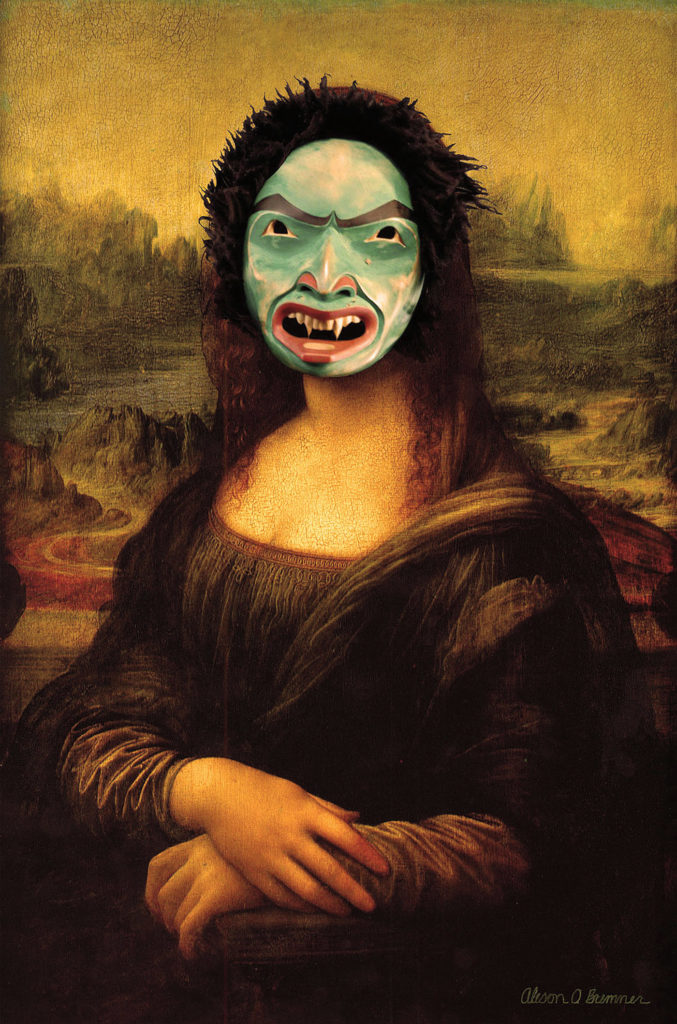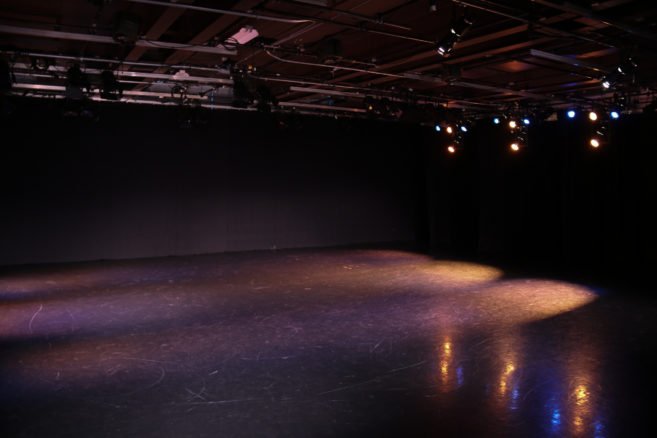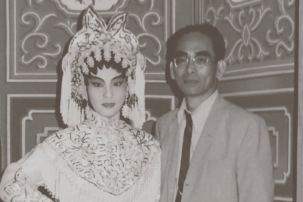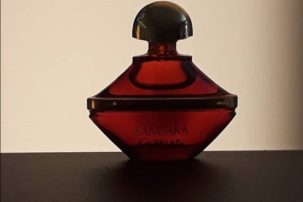In my earlier designs as a writer, I learned to storytell in the vein of ekphrasis—that is, through the literary description of or commentary on a visual work of art. I think I speak to many writers who have undertaken writing workshops to look to painting as inspiration. Ekphrasis is a rhetorical exercise in which an artist relates to another medium by describing its aesthetics, form, or thematic essence. The act of ekphrasis is thereby one of relations, a contract of kinships. One of the first painters I ever sought to respond to was William Kurelek, a Ukrainian Canadian artist and writer from the Prairies who often painted the prairie in the rather horrific idyllic sensualities it inhabits. Much of his work revolves around Manitoba, primarily Stonewall, which is in the same Interlake district as my hometown, Selkirk. Two paintings in particular have haunted me to this day: This is the Nemesis (1965) and When We Must Say Goodbye (1977). You, perhaps, may recognize some of these visual inspirations in my works. The earliest poems in full-metal indigiqueer (2017) emerge from my fascination with the apocalypse and warfare which, in their chrysalis stages, were birthed in the atomic apex of Kurelek’s nemesis huffing into a truffle on the horizon. When We Must Say Goodbye is a painting detailing a lone woman sitting on driftwood who stares sullenly at her feet in a large, panning depiction of a beach at rest—a scene you may recall from Jonny Appleseed (2018) where the titular character and his boy-lover Tias survey each other’s bodies and ponder the ethics of loving and mourning for the ironic goodbye that is to come between them.
I owe a great debt to Kurelek—but that word always cinches me. If ekphrasis is a relationship, then how do we navigate said kinship through the epitome of debt? How do I remunerate the painter and how is debt like a tome, or if thought through the lens of literature, a desire to canonize, then by which I should say tomb? Maybe it’s because I often play “find the hidden NDN” in mediums of artistry crafted upon Turtle Island—even Kurelek has Indian Hitchhiking from Saskatchewan Series #2 (1974), through to the painting of “e pluribus unum, mitakuye oyasin” in Velvet Buzzsaw, the horrific Netflix film about a cutthroat art critic. Then these relations become indebted, inasmuch as Indigeneity within them becomes entombed, or, surfaces for aesthetics while actual Indigenous peoples remain dislocated from the form of artistry. I turn my eyes to Kent Monkman, a queer Cree painter with the drag alter ego Miss Chief Eagle Testickle, who often appears in his paintings. As a Two-Spirit Ojibwe-nêhiyaw femme-nâpew I often energize in the ecosystems of Monkman’s depictions. Often we are shown a hyper-feminine Cree nâpew appearing in lingerie or draped with HBC blankets in the downtown north end of Winnipeg, or in Parliament itself. The Chase (2014) and Seeing Red (2014) have been some of my favourite paintings because they have called me into myself as someone who sees himself in the femininity of nêhiyaw ayâwin in the often hyper-masculine and heteronormative streets of Winnipeg. I ask myself if I too owe a debt to Monkman, and if so, how does that inform or rupture relationality?
I identify as Two-Spirit, which means, within Western ways of knowing, much more than simply my sexual preference, but rather that I am queer, femme/iskwewayi, male/nâpew and in relation to my homelands and communities. I also say that because queerness, or settler sexualities, have stolen so much from Two-Spiritedness—I am a sovereign through sovereignty calling. Often when I meander through a gallery I am overcome with feelings of obliteration because, one, I am finding that “hidden NDN” and I remember that a museum is a scaffold that has executed relationality, and two, because I am bombarded by figures of femininity that bulge in their boisterous beauty, all beheaded in this catacomb. I find my femininity in fragments: here, Mona Lisa’s cheek on the floor pinked with berry blush; here, a pearl earring and an earlobe sliced in half; here, I come across the hem of a gold-leaf gown by accident; and here, the sunhat of a woman distorted into disorder. I wonder if what we consider the beauty of femininity is always laced in the sadistic? But I leave the cata-gallery feeling fulfilled because I too swell the pubis and here I am never asked to placate my largeness. Maybe I tell you all of this to simply ask: How am I in relation to myself? How am I indebted to my self? How do I subject myself to subjecthood? Perhaps I walk around an amalgamation, a symbiosis of iconographies I, myself, have Indigenized? Perhaps I am a nemesis, by which I mean the Greek nemein, or giving what is due? How do I, as a femme-nâpew, survive the self that has normalized obliteration? Where is the “I” in the atomic apex of my warring ethics?
At my heaviest I was 280 pounds, at my lightest 150. As an overweight child I used to confess to manito that I wished they had made me a woman so I could jingle in my haughtiness, here self-determination being haute couture as many of my aunties have been wonderfully rotund. I have combatted myself on why I call myself Two-Spirit over gay or queer and have had conversations about what it means to paint myself ceremonially. I do not call myself Two-Spirit to signify romantic idealizations of queer Indigeneity, I do it because I, and by extension this name I call myself, come from the red silk of the Red River. I do not perform femininity in order to quantify my queerness, I do it because there are days where I feel more feminine and my femmeness has always been more aggressive—a tool I have often relied on to navigate the corridors of institutions. I love my body, by which I mean my selves; I need to tell you that—it goes without saying that loving one’s own Indigeneity is always a political act. And I often write about my body to celebrate it because all artwork is an optic of voyeurism. But my body in its femmeness often betrays me, so that when I leave the gallery I am asked to ponder the ethics of such an owing and an owning.
I have always dreaded the moment of stripping—I have feared nudity the most when it came to intimacy because my body is a stretched muck. I have seen the eyes of lovers when they undress me and see the ways in which the body droops, where it is not tightened to the core, where their desire is tricked and I am a trickster of a nâpew. And I mean body here not only in mine, I mean it here to signify bodies of land, water, literature, artwork. A body never meets the expectations of pornography, and I mean pornography here in terms of use, abuse, peeping, extraction, penetration, I mean pornography here in terms of the machinations which consume and exalt the epitome of accessibility. My body betrays my lovers as much as it does myself, much to the point that I wonder if I, and everyone else, is in a destructive relationship with the word “body” in all of its morphologies?
Body means miyâw while also meaning something that is given. I look to its roots, for body also comes from Old English’s bodig/bodeg meaning trunk, again this blanket of flesh is rooted into the land—I wear my skin ceremoniously, or at least I try to. The body is a principal, it is the main part of anything, which itself, as a definition, comes from Old High German’s botah, which has wilted into linguistic oblivion and bloomed into Lieb and Körper. It’s only in English that the body remains a great and important word. Why in Cree is the body a gift? I would think here that the body is like a jack, we plug in to the womb of our mother, gain vantage points into the world that sits beside ours, or above, or sometimes below—which isn’t to say I look to heaven or hell but rather I look upward into nohkomak and downward at nikawiyak. Those are her breasts and there is her vulva, and looking in any other direction is a peeking into kin. Our nêhiyaw bodies are read in different tenors from English and Western conceptions of body—here I am an offering, and no small sampling of me will feast you for you are not the spirit world, you are the embodied one. My body is a gifting, something I must give you, which roots into corporeality, which extends into corpses—miyâw means all of these things. I want to see my body as miyâwâtikwan, meaning it is a celebration, it is joyous. Like when I come to you in the night, nudge the bridge of your nose with my tongue, lick the wound that exists in your canyon, and ask you if you’ll fuck me? You do. I queer my spine which is to say I churn into the Cypress, climb on top of you, tell you to give something of yourself to me, I want to taste the trunk of your body and feel like anything other than a corpse. You churn sap into me when you’re done eating, feed me carbohydrates and electrolytes. This is the lifeblood we share between us—it has never been a dead thing. Afterwards I feel an overwhelming need to thank you, not for loving me, which surely you do, but because I feel guilty for having ever asked in the first place. My body is an offering, never a choosing. miyâwâtikwan becomes miyâwaham: we are simply passing by the waters and I am drinking in the light.
Which brings me back to artistry for which I have been saying my body is a tapestry. Maybe I cling to ekphrasis to make an emphasis: I own a body worth owing. And perhaps I cling to art that is in the rakes of destruction, the surreal of reality, which isn’t so surreal when we are faced with the outcome that the earth is dying and our futures are maimed. I find excellence in interiority because my body is a marshland and I find innovation an inward diving—and just what in the hell seems worth living for in a moulding of bodies that are continually dying?

 Alison Marks, Mona Lisa Smile, 2014. Giclée print, 68.5 x 45.7 cm. Courtesy the artist.
Alison Marks, Mona Lisa Smile, 2014. Giclée print, 68.5 x 45.7 cm. Courtesy the artist.






